
13 minute read
Ensuring Australia’s food bowl will not be empty amidst global food shortages
Ensuring Australia’s food bowl
will not be empty amidst global food shortages
Rob Stummer, Asia Pacific CEO at SYSPRO
High consumer demand post-pandemic, catastrophic flooding and workforce shortages here and internationally have had a significant impact on Australian food supply chains. A key cause of the increasing pressure on the supply is the war in Ukraine, which is impacting inflation and fuel costs as well as the availability of gas, fertiliser and wheat. So how can we ensure that our food supply chains are resilient enough to avoid Australia’s food bowl being empty?
As a nation, we must focus on strategic food production to achieve food self-sufficiency for the essentials such as wheat, dairy, fruit, vegetables, meat and meat alternatives, such as plant-based foods.
The plant-based trend
While consumer tastes guide the growth of meat and protein alternatives, the plant-based market presents many opportunities for associated products and services that will broaden the category’s reach and supplement the food supply by offering more options.
Research is underway to find alternative technologies and production methods that provide food with a lower environmental footprint. At the same time, nutritional and sensory characteristics can be similar to or even better than that of animal products.
Cell-cultured food production for meat, seafood and poultry is being studied owing to its potential to achieve environmental sustainability due to low land and water requirements and reduced greenhouse gas emissions caused by livestock and meat storage and distribution.
Distribution challenges
Major exporting nations for food products like Argentina, India and many others have already introduced ‘export bans’ to increase their national reserves of certain essential foods like wheat, dairy and meat.
There is not only a skills shortage but a lack of shipping containers, ships and shipping workers for exporting grain and other food products. And food distribution costs have also increased due to the rising fuel prices for shipping and the power required for warehousing and storage.
One of the critical causes of the current food shortages is our ability to respond to the rising demand. The steady increase in demand for consumer goods is directly linked to the new normal of working from home, so logistics companies are now under mounting pressure.
It is a no-brainer that improving distribution networks by investing in automated warehousing, driverless vehicles, robotics and drones will help to address the workforce shortages by reducing the over-reliance on labour and enabling distribution centres to operate at full capacity round the clock.
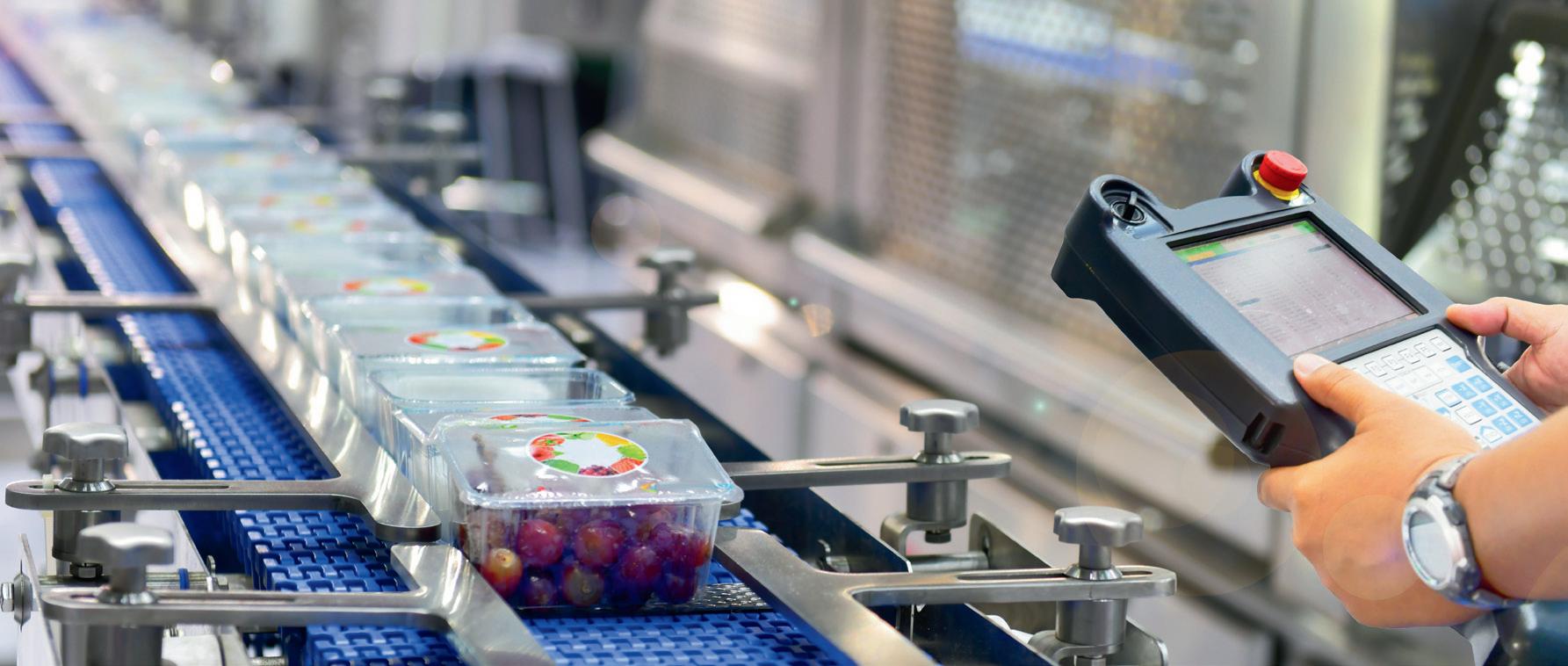
Automation optimising food production and distribution
With a pressing need to optimise food production for future generations, like their distribution partners, food manufacturers will need to become increasingly automated and embrace advanced technologies to optimise production and improve productivity, quality and sustainability.
These advances will help drive efficiencies and deliver healthy and sustainable food to our population whilst reducing food wastage. Critical investments in advanced technologies like artificial intelligence (AI), machine learning, robotics, drones, bio-engineering and 3D printing are essential to getting quality food products from farm to fork in the shortest time possible. 3D printing is currently being introduced to the food industry, allowing the production of on-demand, complex and customised foods. In addition, the technique may be used for a personalised diet to print products that specifically meet an individual’s nutritional needs.
Food delivery has become the largest market for food technology innovation due to a massive uplift in private investment and the emergence of many meal-ordering start-ups. However, challenges such as scalability, the preference for locally produced food and ensuring freshness during distribution are driving the need to optimise the supply chain.
Visibility optimising the supply chain
The key to improving supply chain performance is to have a single view connected to the relevant systems and accurate, up-to-date data, which is accessible to all stakeholders.
Access to data through a supply chain portal gives muchneeded visibility and control over supply chain processes, such as procurement, manufacturing, storage and logistics. This can help to reduce food waste and the need for product recalls, which is prevalent in the food and beverage sector due to food safety laws.
A supply chain portal also provides the ability to engage, communicate and connect with colleagues, suppliers and customers while giving manufacturers the control and agility they need to deliver on changing demands, ensuring Australian supermarket shelves are packed and always able to supply their customers with fresh produce.
Developing a digital strategy
A connected supply chain driven by smart manufacturing technologies such as automated warehousing, cargo tracking and remote fleet management is essential.
To build more resilient supply chains going forward, food production companies should consider investing in technologies that involve all stakeholders, including internal teams, suppliers, trading partners and end customers. Whilst implementing an enterprise resource planning (ERP) system is key to ensuring supply chains are more resilient, companies in this sector need a robust digital strategy that underpins their supply chain strategy. A fully integrated ERP solution with embedded analytics is required by food and beverage producers and distributors to tackle the immense challenges they face by optimising their business operations and satisfying customer demands while increasing factory output.
SYSPRO au.syspro.com
Automated guided vehicles
Automated guided vehicles (AGVs) are used in a variety of industries to transport and store all kinds of products and materials all without human intervention. Equally at home, in factories, warehouses, distribution centres and shipping areas, AGVs can provide a safe and secure way to increase process efficiency and improve business profitability.
The Dematic Compact Transfer AGV is the smallest in its range and can be used to eliminate the need for extensive use of pallet conveyors. The Compact Transfer AGV provides an open plan automation solution, with flexibility to adjust to users’ ongoing business needs.
The compact AGV is available with a tabletop lift or conveyor and is designed to pick up and drop off pallet loads from conveyors or platforms, connecting production lines to delivery, handling raw materials, for pick & go applications, empty pallet handling, and is suitable for use with robot cells.
Thanks to their accuracy and safety features, AGVs create a safer working environment, with no accidental collisions and zero damage to product loads. AGV systems provide a safe and cost-effective alternative to manually transporting goods, especially sensitive or hazardous products.
The product is manufactured at the Sydney facility in Australia, with service and support provided region-wide. The company analyses a user’s current operation and suggests and supplies solutions for transport, interface, loading, unloading and routing.
Dematic supplies fully integrated automation solutions for every application, delivering the best value possible.
Dematic Pty Ltd
www.dematic.com.au
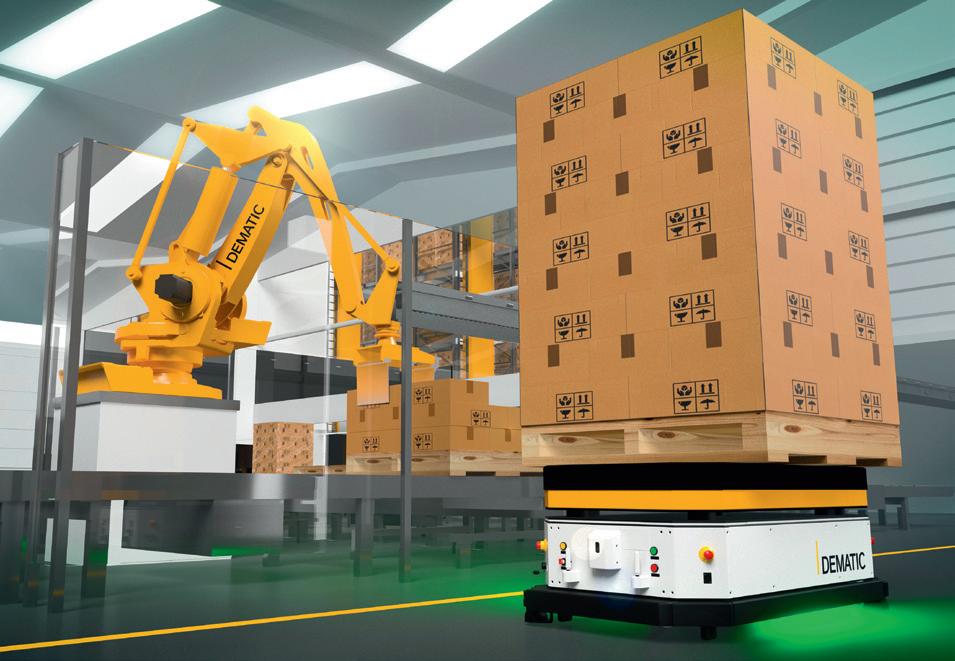

Using voice to boost operational efficiency
Tasty Fresh, a company specialising in workplace food manufacturing and delivery, has improved its warehouse productivity by 35% using a voice-directed picking system. The system has helped improve its stocktake and supply chain operations.
Tasty Fresh delivers fresh and hot food, snacks and drinks right to workplaces daily in Melbourne, Perth, Sydney, Newcastle and Queensland. Dematic was recently engaged by the organisation to help it move from a manual system to a more automated and centralised solution for managing its supply chain.
The Dematic Voice Solution was selected for the task. It is a real-time logistics voice-on-Android system that works without paper and is hands-free, allowing operators to use a mobile device and voice headset to input information and scan products.
Data ranging from order-picking to replenishment and stocktake is fed into Tasty Fresh’s central supply chain system. The system was implemented at each of the company’s depots, and the two primary voice workflows that were implemented were pick-to-trolley and van loading.
The Tasty Fresh team is advised on which food or drink product SKUs and quantities are to be loaded onto trollies, after which point the vans are loaded. Team members are subsequently instructed, per van ID, which SKUs and associated quantities are to be replenished into each van in SKU sequence.
Product shorts, overfills and audits are all tracked at the same time. This saves workers time as they don't have to do these tasks separately. The system thus lets staff check expected stock from point-of-sale deductions versus physical van replenishment.
The technology has allowed the company to improve productivity by 35%, and errors have been reduced in the picking and packing processes. Additionally, counting errors have been reduced as this process is not done manually.
“The voice solution tells us what to load inside the vans and tells the system how many we are loading,” said Aline Parra Sanchez, Brisbane Warehouse Manager at Tasty Fresh Food Co. “This means that when we are loading we are also doing the stocktake. It’s a great system that ensures our stock is right by checking our sales match with the stock being loaded in the vans.”
“Voice has improved productivity across the business,” said Adam Van Bergen, National Operations Manager at Tasty Fresh Food Co. “We’re saving between 5 and 10 minutes a day per van sales manager, and while that may not sound like a big deal, 5 to 10 minutes across 170 employees a day is quite a significant cost savings.”
Dematic Pty Ltd www.dematic.com.au
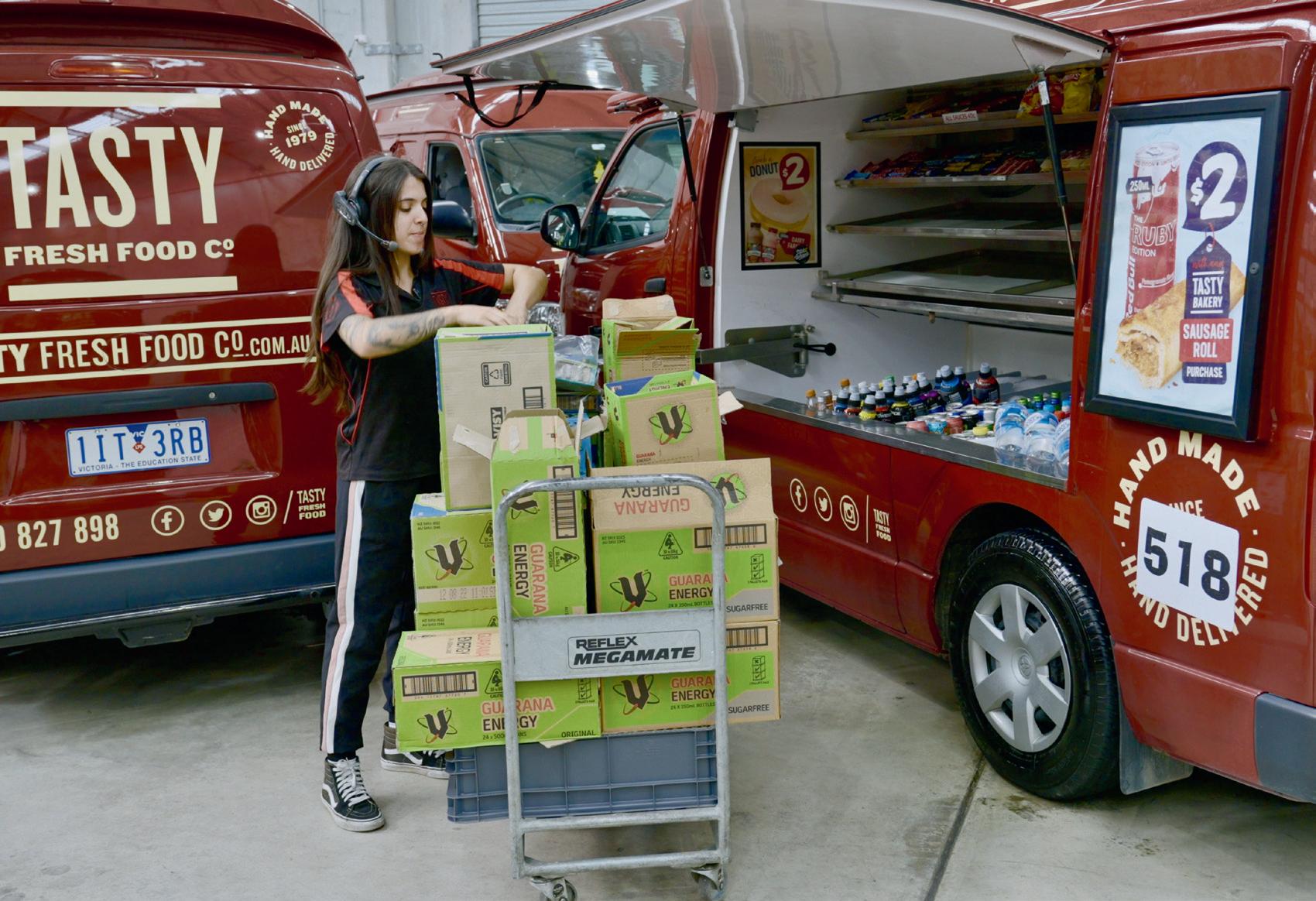
Flexicon’s new manual dumping system with integral conveyor and separate dust collector is suitable for dairy powders, pharmaceutical products and contamination-sensitive bulk foods. Designed and finished to 3-A sanitary standards, the system comprises a manual dumping station with surge hopper, flexible screw conveyor and support boom on a castor-mounted frame and a separate mobile dust collection system that can be configured alongside or remotely. Ready to plug in and run, the mobile system can serve multiple functions throughout the plant and then be rolled to a washdown station and storage area. A dust hood with hinged lid is mounted to the floor hopper with quick-release clamps and is equipped with an internal baffle and air vent port for efficient dust collection. A support tray allows operators to stage manual additions from handheld sacks before dumping material through a grate fabricated of powerful rare earth Neodynium-iron-boron magnet material.
The hopper is equipped with a mechanical agitator assembly to promote uninterrupted flow into the charging adapter of a 3 m flexible screw conveyor with a stainless steel screw engineered for the conveyed product. Fully enclosed in a polymer tube inclined at 45°, the flexible screw is the only moving part contacting material and is driven by an electric motor beyond the point of discharge, preventing material contact with the 3-A rated motor shaft seal.
All product contact surfaces are of #316 stainless steel with continuous welds ground and polished to 180 grit or better, including the specially designed screw which is welded instead of fastened to the motor drive shaft. A quick-release end cap allows removal of the flexible screw from the lower end of the crevice-free conveyor tube for rapid sanitising and inspection of both components.
Safety interlocks prevent operation of the conveyor during screw removal or separation of the dust hood from the surge hopper.
The standalone dust collector is equipped with an automatic reverse-pulse filter cleaning system with stainless steel air reservoir rated at 99.99% collection efficiency for materials with particle sizes of 5 microns or greater. Solenoid valves release short blasts of compressed air inside the cartridge filters on an alternating basis at timed intervals, dislodging dust build-up from outer filter surfaces with no loss in efficiency. The raised height of the unit allows gravity discharging of accumulated dust into mobile bins, drums or other vessels for disposal or reintroduction in select non-dairy applications.
NEMA 4 and NEMA 4X enclosures and washdown rated motors allow rapid sanitising using steam, cleaning solutions and high-pressure water.
Flexicon Corporation (Aust) Pty Ltd
www.flexicon.com.au

BOOST PRODUCTIVITY AND LOWER COSTS WITH ENMIN’S AUTOMATION PACKAGE.
Our new 3 in 1 package allows food manufacturers to easily automate their production line and enjoy multiple benefits including significantly improved production efficiencies and reduced labour costs. The package consists of a Storage Screener, MiCON Elevating Conveyor and Hopper Feeder. Like all our products, the components are constructed to meet the toughest WH&S standards whilst maintaining the highest quality and reliability that we are known for. One of the key benefits of this modular package is that it eliminates equipment redundancy. It can be added to, extended and modified in the years ahead as your production needs evolve.
FREE DELIVERY AUSTRALIA WIDE, FOR ALL ORDERS PLACED BEFORE THE END OF 2022
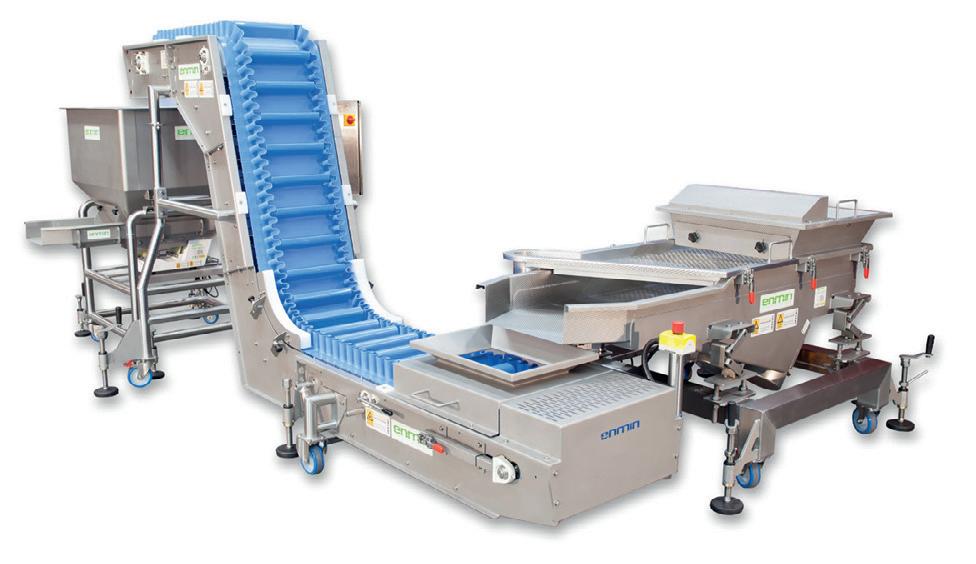
Track-and-trace trial of cherry and potato supply chains
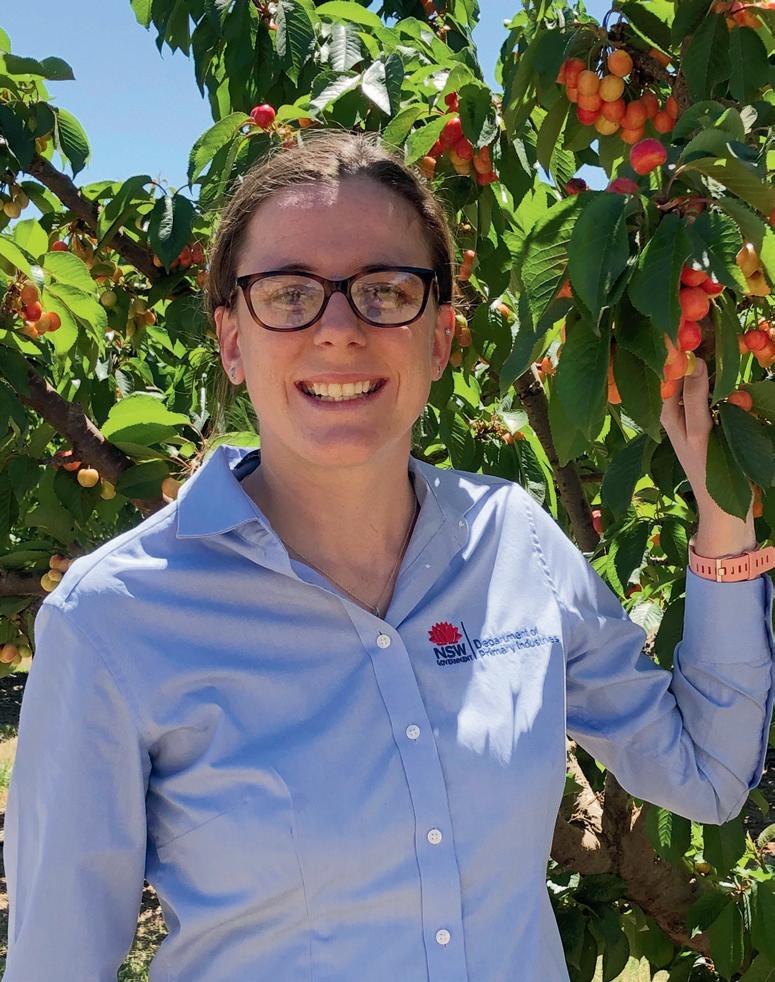

iStock.com/paulacobleigh
Conducted as part of a Food Agility CRC collaborative project, the CherryPlus traceability project trialled GS1 data standards to create a digital map of properties and the movement of products in the NSW cherry and potato industries.
The pilot project used unique serialised QR codes with a GS1 Digital Link label that were applied to Woolworthsbranded bags of brushed potatoes and punnets of organic cherries.
The data was managed via FreshChain’s fully integrated, blockchain-enabled, paddock-to-plate assurance system. This allowed the product to be traced in real time, from property to store, providing information about how the product moved along the supply chain and the time spent at each location.
Project leader and NSW Department of Primary Industries Development Officer Jessica Fearnley said researchers simulated a product recall in track-and-trace trials.
“The project has shown that GS1 data standards can be used to provide instant product identification and recall, something that’s critical during an emergency situation such as biosecurity incursion or food safety breach,” she said.
“The system also supports the electronic flow of information to demonstrate compliance with regulatory requirements and this has the potential to improve market access and reduce compliance costs for the industry.”
Food Agility Chief Scientist Professor David Lamb said the research has provided a proof of concept that can also be developed for other supply chains.
“This type of integrated traceability system offers many potential benefits for growers, exporters, governments and consumers, including providing assurances of food safety, provenance and authenticity of products,” Lamb said. “It also provides the framework for data standards and integration of traceability systems that could be expanded to other agrifood supply chains.”
Importantly, using a new GS1 Digital Link QR code on packaging provided an opportunity for real-time feedback from consumers.
FreshChain Systems’ Greg Calvert said datasets can provide powerful insights to inform decisions to reduce costs, grow profit and build a community of supporters.
“Growers and brand owners can take advantage of the digital age with integrated smart labelling and packaging to share generational farming stories, sustainability initiatives and product attributes that form a growing part of the buying decision criteria at the point of purchase,” he said.
Jessica Fearnley
The CherryPlus project was a collaboration between Food Agility, NSW Department of Primary Industries, Woolworths, FreshChain Systems, GS1 Australia and Cherry Growers Australia, Mitolo Family Farms and Cantrill Organics. For more information, the final report is available for download.











